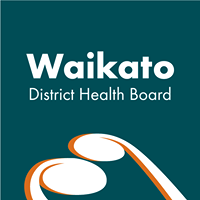Media Release
Date: 23 November 2009 – embargoed till 6am
Waikato DHB Committed to Six-Hour Target
A stay of less than six hours for 95 per cent of patients in Waikato and Thames hospitals’ emergency departments is achievable, say clinicians at both hospitals.
While Thames is nearly there, Waikato Hospital has some way to go but can do it, says Health Waikato chief operating officer Jan Adams.
“We’re unhappy about where we were in September at Waikato Hospital but we’re confident we’ll improve each quarter,” she said.
The Ministry of Health today released DHB ranking tables for its six health targets for the quarter ended 30 September. One of the targets is that 95 per cent of patients are admitted, discharged or transferred from hospital emergency departments within six hours.
Waikato DHB achieved 67 per cent at Waikato and Thames hospitals.
Individually, Thames Hospital was 91 per cent on 3241 attendances while Waikato Hospital had 65 per cent of its 14,028 patients admitted, treated or discharged within six hours.
Emergency departments at Waikato DHB’s rural hospitals in Tokoroa (97 per cent with 2310 attendances), Taumarunui (99 per cent/1198 attendances) and Te Kuiti (97 per cent/456 attendances), were not included in the ministry figures.
Thames emergency department clinical nurse manager Anne Daniels welcomed the publication of the figures saying hospitals needed measurable targets.
“It’s all about looking at our processes and reducing time wasting,” she said.
Thames came close to reaching the target in an environment where emergency department attendances were up more than 10 per cent.
“I believe we’re nearly there. When we do it, it will be because of very good teamwork right throughout the hospital,” she said.
But there is no quick fix in Hamilton, according to Waikato Hospital group manager Dr Grant Howard.
“Waikato Hospital is a big place, a tertiary hospital with a complex system so to improve, and to eliminate waste takes time if it is to be done well,” he said.
The department currently sees an average of 150 patients each day and is the trauma centre for the central North Island.
“While not all change is improvement, we cannot expect improvement if we do not change what we are doing.
“We accept the six-hour is a good thing so long as the focus remains on the patient, and you have our commitment that it will,” said Dr Howard.
“We have done better since then and on Friday (November 20) got up to 95 per cent during the day but we still have a long way to go to achieve the target by 30 June next year.
“We now have a real-time report running in the department that colour codes each patient according to how long they have been waiting so staff can easily see which patient is getting close or crossed the six-hour target.”
The department also established a 24-hour short stay unit for patients that require further observation but not admittance to a ward.
An internal campaign is also underway at the hospital to remind staff from other areas that everyone plays a part.
“It is clear that we need a staged and sustainable approach involving a whole of hospital response,” said Dr Howard.
“Every person who works at Waikato Hospital has a vital role to play.
"From the ED staff working to assess and treat as quickly as possible to the attendants who move patients and ward staff that need to discharge their patients to the Transit Lounge and update the system to show free beds.
"We all form part of the patient's journey and need to work together to achieve this target," he said.
Emergency departments provide acute health care so the timeliness of treatment delivery (and any time spent waiting) is important for patients.
“Long stays and overcrowding in the emergency department affect patients and the speed with which they get care and start the process of healing. Neither is it a good and safe environment for our staff to work in,” said Dr Howard.
A new emergency department opens at Waikato Hospital in 2011. While achieving the six-hour target is mainly about systems and clinical resources, the physical resources to deliver an optimal outcome are currently less than ideal and a new emergency department will help in the ongoing achievement of the target.
ENDS



 Royal Commission Covid-19 Lessons Learned: Public Submissions To The COVID-19 Inquiry Close On Sunday 27 April 2025 At Midnight
Royal Commission Covid-19 Lessons Learned: Public Submissions To The COVID-19 Inquiry Close On Sunday 27 April 2025 At Midnight Te Whatu Ora Health New Zealand: Low Risk To Public Health Following Fire At South Taranaki Hotel
Te Whatu Ora Health New Zealand: Low Risk To Public Health Following Fire At South Taranaki Hotel NZCTU: Govt Vocational Education Reforms Will Cause Massive Disruption
NZCTU: Govt Vocational Education Reforms Will Cause Massive Disruption NZ Liberation Museum - Te Arawhata: Anzac Day Commemorations In France To Remember All New Zealand Soldiers
NZ Liberation Museum - Te Arawhata: Anzac Day Commemorations In France To Remember All New Zealand Soldiers Royal Commission Covid-19 Lessons Learned: We Want To Hear From As Many People As Possible, Says COVID-19 Inquiry Chair
Royal Commission Covid-19 Lessons Learned: We Want To Hear From As Many People As Possible, Says COVID-19 Inquiry Chair My ECE: Parents Reject ECE Deregulation - 'Children’s Safety Is Not Optional'
My ECE: Parents Reject ECE Deregulation - 'Children’s Safety Is Not Optional'